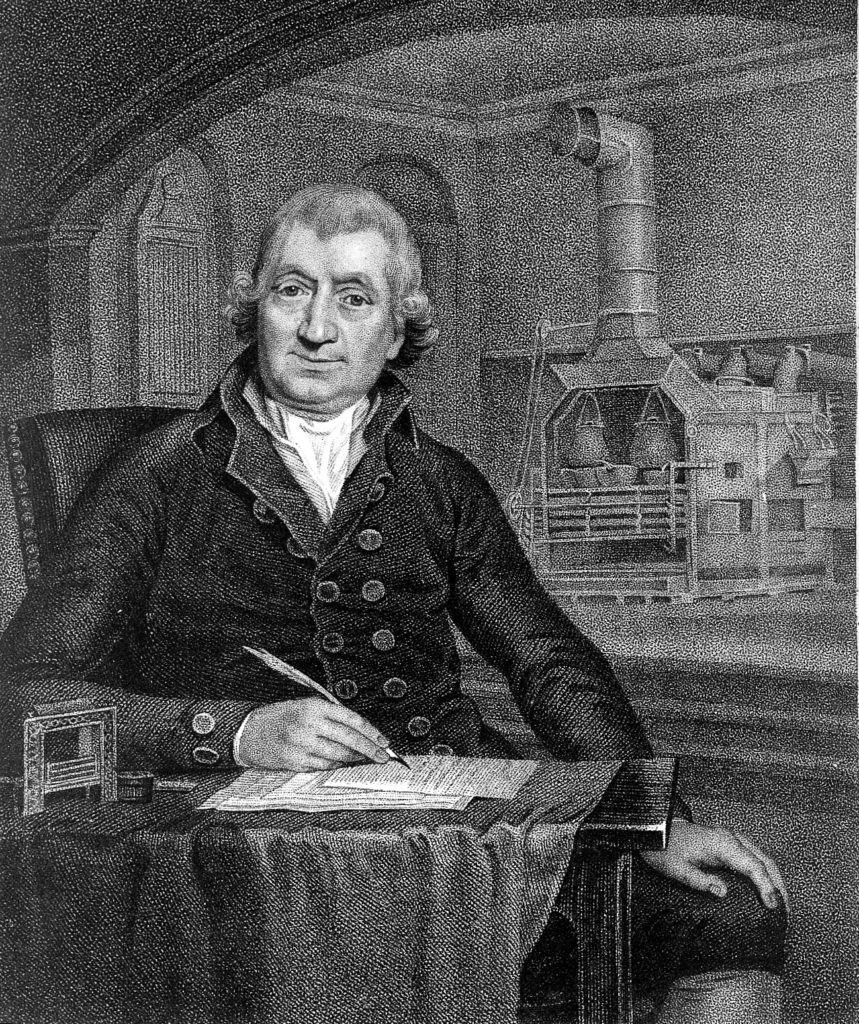
Sir Benjamin Thompson, Count von Rumford. Stipple engraving.
Credit: Wellcome Library, London. Wellcome Images
images@wellcome.ac.uk
http://wellcomeimages.org
Sir Benjamin Thompson, Count von Rumford. Stipple engraving.
Published: –
Copyrighted work available under Creative Commons Attribution only licence CC BY 4.0 http://creativecommons.org/licenses/by/4.0/
American born Benjamin Thompson (1753-1814)left for England in 1776 after serving in the British Army during the American Revolution. Knighted by King George III, he was later granted the title of graf (count) in 1790 under the patronage of Karl Theodor.
Sir Thompson, Count von Rumford, was a prolific inventor. In addition to the coffee percolator, he also wrote a series of treatise and drafted designs for improved efficiencies for fireplaces and keep chimneys from smoking, which was a common problem (see advert). This work helped to inspire other inventions like the kitchen range and double boiler (https://www.britannica.com/biography/Sir-Benjamin-Thompson-Graf-von-Rumford). In addition to these household items, the noted physicist helped support the growing theoretical work on thermodynamics. He was also a well noted designer, designing warships.
Dividing his time between France and England, Rumford was married for a second time in 1804 to the widow of French chemist Antoine Lavoisier, Marie-Anne Lavoisier. They separated after 3 years, but he continued his scientific work and settled in Paris until his death.
His first wife was a wealth widow, Sarah Walker, who he had lived with in Rumford (modern day Concord). Forced to flee the United States, he left his wife and daughter behind never to return or send for them. According to a book written about him, his personal romances with women eclipsed his scientific achievements (Sex and the scientist : the indecent life of Benjamin Thompson, Count Rumford) which perhaps explains his tendency to abandon his wives.
What is perhaps most interesting about Thompson is that he was truly a pattern card for the American myth of pulling yourself up by your bootstraps (or in his case, marrying into money to fund your interests). Born in rural Massachusetts, he was originally apprenticed to a merchant, shopkeeper, and then doctor. His prospects, until his marriage, were patchy at best and through the influence of his wife he was able to receive a military appointment in the British Army. Ultimately, this was the launchpad for him to remake himself as a inventor, academic, and co-founder of the Royal Institution of Great Britain.
His daughter, upon his death, inherited his title as Countess Rumford. Having lived with her father since 1796, Sarah would later make her home in Concord and be the first American Countess. A noted philanthropist, she had an adopted daughter and never married.









